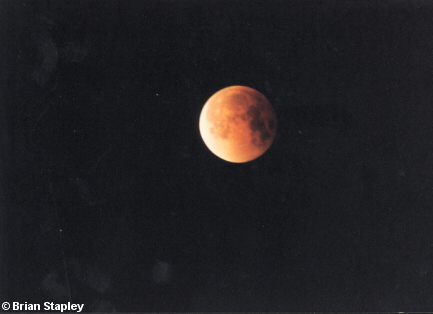



Grid reference: SJ290539
Co-ordinates: 329015, 353977
Bearing: ESE?
On a really clear night, you can see for 240 000 miles (on average!).
This was taken during a lunar eclipse in February 2000.
© Brian Stapley


